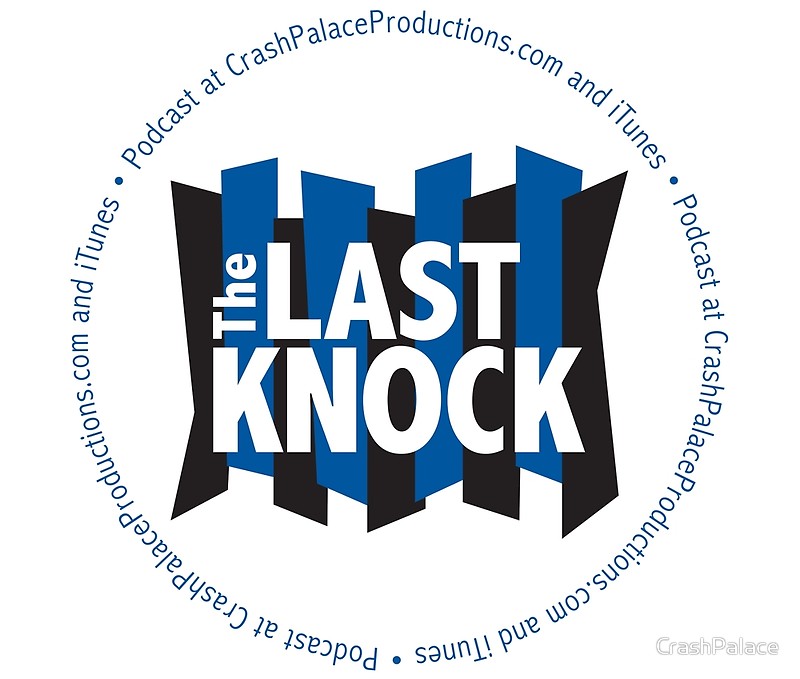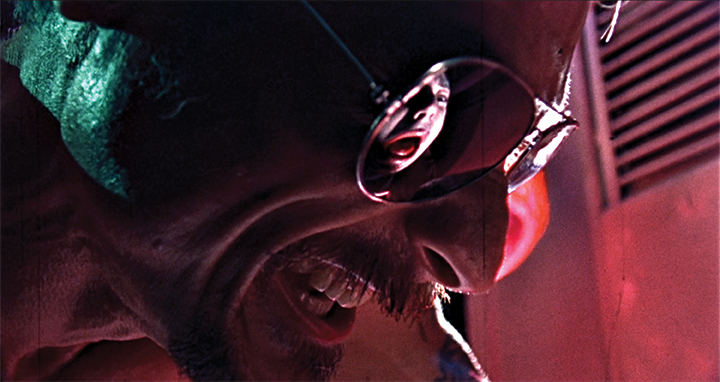Human No More: Smart Horror
[2020. 124 minutes. Director: Christopher Alan Broadstone]
Questions and Conundrums
Christopher Alan Broadstone’s Human No More creates a nexus of art and intellectual curiosity without condescending to its audience. It explains just enough. Characters don’t flinch from questions and philosophical conundrums, and viewers are expected to do likewise.
During the initial viewing experience, I found myself soaking up its aesthetics. On the second, inquiries and connections began to bubble to the surface.
If you prefer art that leaves no room for ambiguity, this micro-budget feature will likely disappoint. However, if you like bracing, challenging cinema that tackles heady topics in a probing and unsettling manner, this is one of the best genre offerings of 2020.
Put simply: if you’re a fan of A24, Magnet Releasing, or IFC Midnight, you’ll find much to appreciate here.
The Reality of Mortality
Perhaps the best way to encompass how Human No More impacted me is through a personal anecdote.
I’ve always been envious of people who speak, with either fondness or ingratitude, about parents and grandparents reaching exceptional old age. The gift of life for those with the best genes…or the luckiest spin on the existential roulette wheel. When I lost my mother nearly 20 years ago, I was a month shy of my 20th birthday. (Hey there, 2020!)
Life takes on an odd sheen when you face the reality of mortality at a young age. Notions of textbook “normality” mandate lifespans into the 70s and beyond – enough time for children to grow up, accomplish things, and – in the best-case scenario – reflect with appreciation on the impact their parents had on their formative years.
Instead, I became fascinated with the tenuousness of human existence. Pondering death and dissociation is one thing, but peeling back the layers that comprise notions of “being human” became an even greater source of anxiety. At the end of the day, there’s no divine logic mandating a 40-hour work week, procreation, and ownership of a house or car to fit into some Big Picture.
All that to say, my mind has been in a state of cautious, ever-present awareness toward the facade of life since that fateful run-in with the Reaper (who visited again this year, when my father passed roughly a month before COVID-19 took off stateside).
Human No More possesses a similar hesitancy toward, as Monty Python put it, “the bright side of life.”
Feeling of Connection
As a genre, horror has the ability to confront difficult emotions in unconventional ways. The Blackcoat’s Daughter is an excellent example of a melancholy meditation on grief, loss, and loneliness that’s also frightening for other reasons. Efforts like Carnival of Souls and Eyes Without a Face possess a similar power.
Films that resonate most with me feel as though they were, by some divine act, made for me. It’s like having someone whom you’ve never met burrow into your brain, abscond with your thoughts, and somehow bring them to life through cinema. I doubt this is what most people consider “movie magic,” but I’ll be goddamned if that isn’t how it feels to me.
I place a high value on the therapeutic power of the moving image. There are times when films express the inexpressible, ejecting us from reality when the pressures of the world become too great. But that feeling of connection infiltrates greater and more complex truths than can be contained in a simple, “that was good/bad” reaction.
Irreconcilable Conscience
And so it goes with Broadstone’s epic “macabre thriller,” Human No More.
The film follows Detective Nemo (Tony Simmons), a drinking, smoking Noir archetype drawn to the HAB, a nightclub housing human-amphibian hybrids and desperate characters stuck in personal spirals of irreconcilable conscience.
Haunted by a case he couldn’t solve, Nemo finds himself besieged by the jester-like wiles of one Mr. Blight (Gabriel Sigal), a man with a barbed tongue-in-cheek sensibility toward misanthropy and the futility of human existence. He latches on to Nemo like an aggressive tick that can’t refuse that sweet vino, and their back-and-forth comprises most of the film.
Endless Madness
Broadstone’s approach is built on a solid foundation of patience and intellectual curiosity. This is a world where pseudo-Lovecraftian mutations linger in the fringes and detectives deliver hard-boiled voice-over, but at the end of the day, the theme of redemption through a haze of seemingly endless madness resonates because the character interaction is so strong.
We’re introduced to Nemo and Blight in one of the rooms of the HAB. Distorted mannequins, old theater seats, and odd items in jars (children’s shoes; fetal pigs) speckle the otherworldly landscape. Harrington (J.R. Wildridge) is the barkeep who maintains a weary watch over the duo.
From the start, Broadstone uses extreme close-ups to shade in the characters: Blight, with his smooth skin, wide eyes, and impish dialect, serves as a counterpoint to Nemo’s wrinkled flesh, pinched dark eyes, and exhausted tone. As we cut back and forth between them, the filmmaker establishes a dichotomy and synchronicity between the duo: while Blight speaks in riddles and paradoxes, Nemo – who has considerably less dialog – is prone to doing the same.
Sinking the Talons In
At this juncture, Human No More sinks its talons in. I was at once fascinated by the rhythm and content of the characters’ conversations, as it doesn’t shy away from philosophical alleys where answers may beyond human comprehension. We realize this isn’t going to be a slasher or monster movie (in conventional terms, anyway), but we also don’t know what it’s going to be, period.
That’s part of the excitement. While certain cookie-cutter Hollywood filmmakers with limitless budgets manage to make “imagination” seem boring, Broadstone creates a fully fleshed-out world from his limited locations. Human No More could’ve easily felt like being stuck at a bar with a nattering weirdo for 2 hours, but it instead goes to innovative places, perhaps because it’s unconcerned with ticking off boxes on the “horror cliche” checklist.
Laughing at the Devil
In addition to its mystery and characterization, a huge component of Human No More is its unfettered embrace of plain down literacy. Broadstone has written novels and short stories, and is a big adherent of Edgar Allan Poe. This knowing sensibility permeates the film, while never traipsing into smugness or pretension.
There are passages in Human No More that bring abstract perspective to the dialog-driven dramatics. Take, for instance, the depiction of Death as an entity not just centered on claiming souls, but avenging souls taken prematurely. Or the subversion of gender conventions in a locked-room tale of murder taken to queasy, Rob Zombie-an sexual extremes. Or the final sequence, which combines a videotaped confession with a deeply-felt primal scream toward “a world that’s gone absolutely goddamn insane.”
While Blight’s verbal assaults could’ve been juvenile in lesser hands, Broadstone’s writing and Sigal’s delivery makes every syllable feel dredged from a deep, dark place. He’s been through hell, and laughed at the Devil. Ditto Nemo’s weathered responses that poke and prod in subtler ways. These characters feel like they’ve been living with their transgressions for ages, and perhaps that’s part of the ultimate point: until we can separate ourselves from this perpetual game of one-upmanship, chasing empty signifiers in a quest for deeper understanding, neither our hearts nor minds will ever truly be free.
4.5 out of 5 stars
(More information on Human No More – including purchase links for digital and physical copies – can be found at Texas Poetrope.)
The Plot Sickens: See Jonny Numb’s review of Never Hike in the Snow!
Crash Analysis Support Team

Jonny Numb
Jonny Numb (aka Jonathan Weidler) has been living inside the simulation for too long, and would like to wake up now. He co-hosts The Last Knock horror podcast and also writes for 1428 Elm. You can find him on Twitter and Letterboxd @JonnyNumb.
Get your Crash Palace and The Last Knock gear! 
THE LAST KNOCK horror podcast is a Crash Palace Productions’ featured show. Besides this site, you can find THE LAST KNOCK on iTunes with new shows posted every other Sunday at 9 PM ET.
Crash Palace Productions website design and creation from Brian Yount Digital Enterprises with banner and THE LAST KNOCK art from Palko Designs. Logo designs from Paul Belci.
(Human No More movie still from Texas Poetrope.)

